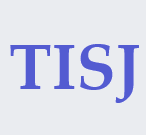Which fields drive the h-index: Difference between revisions
(Created page with "{{DISPLAYTITLE:Which fields drive the h-index?}}") |
No edit summary |
||
| Line 1: | Line 1: | ||
{{DISPLAYTITLE:Which fields drive the h-index?}} | {{DISPLAYTITLE:Which fields drive the h-index?}}{{#seo: | ||
|title=Which fields drive the h-index? - Top Italian Scientists Journal | |||
|description=The measurement of the quality of academic research is often done by means of the h-index measure. | |||
|keywords=H-index, Poisson models, Scaling | |||
|citation_author=Giudici, Paolo; Boscolo, Luca | |||
|citation_journal_title=Top Italian Scientists Journal | |||
|citation_publication_date=2024/09/16 | |||
|citation_title=Which fields drive the h-index? | |||
|citation_keywords=H-index, Poisson models, Scaling | |||
|citation_publisher=Top Italian Scientists | |||
|citation_volume=1 | |||
|citation_issue=4 | |||
|citation_doi=10.62684/FSOZ4761 | |||
|citation_issn=3033-5132 | |||
|}}{| class="wikitable" style="float:right ;border:solid 1px #a2a9b1; background-color: #f8f9fa" cellpadding="5" | |||
|+ <span style="font-size:18px;"></span> | |||
|- | |||
| '''Published''' | |||
|- | |||
| September 16, 2024 | |||
|- | |||
| '''Title''' | |||
|- | |||
| style="width:200px;" | Which fields drive the h-index? | |||
|- | |||
| '''Authors''' | |||
|- | |||
| Paolo Giudici, Luca Boscolo. | |||
|- | |||
| '''DOI''' | |||
|- | |||
| [https://doi.org/10.62684/FSOZ4761 10.62684/FSOZ4761] | |||
|- | |||
| '''Keywords''' | |||
|- | |||
| H-index, Poisson models, Scaling | |||
|} | |||
'''[https://www.topitalianscientists.org/tis/52685/Paolo_Giudici_-_Top_Italian_Scientist_in_Mathematics Paolo Giudici]'''<sup>(a)</sup>, Luca Boscolo'''<sup>(b)</sup>. | |||
<sup>(a)</sup> Department of Economics and Management Sciences, University of Pavia, Italy - | |||
<sup>(b)</sup> Top Italian Scientists founder. | |||
==Abstract== | |||
The measurement of the quality of academic research is often done by means of the h-index measure. Although widely accepted, the h-index | |||
has some issues and, in particular, it may depend on the scientific field in which a researcher operates. To date there is not a definitive answer as to whether this difference holds, and to what extent it varies. To fill the gap, we propose to operationaly measure the difference in h-index across the sectors of a relatively homogeneous population of all scientists of a nation. To answer the heterogeneity issue we apply three different explainable machine learning models: linear regression, Poisson regression and tree models. Our results show that the latter two models better explain the data. They show that the only sectors for which a difference in h-index is significant are Physics, Biology and Clinical Sciences. | |||
==Declarations== | |||
===Conflict of Interest=== | |||
The Authors declare that there is no conflict of interest. | |||
== References == | |||
<ol class="references"> | |||
<li></li> | |||
</ol> | |||
[[Category:Open Access]] | |||
[[Category:Re-Print]] | |||
[[Category:Scientometrics]] | |||
Revision as of 10:26, 16 September 2024
| Published |
| September 16, 2024 |
| Title |
| Which fields drive the h-index? |
| Authors |
| Paolo Giudici, Luca Boscolo. |
| DOI |
| 10.62684/FSOZ4761 |
| Keywords |
| H-index, Poisson models, Scaling |
Paolo Giudici(a), Luca Boscolo(b).
(a) Department of Economics and Management Sciences, University of Pavia, Italy - (b) Top Italian Scientists founder.
Abstract
The measurement of the quality of academic research is often done by means of the h-index measure. Although widely accepted, the h-index has some issues and, in particular, it may depend on the scientific field in which a researcher operates. To date there is not a definitive answer as to whether this difference holds, and to what extent it varies. To fill the gap, we propose to operationaly measure the difference in h-index across the sectors of a relatively homogeneous population of all scientists of a nation. To answer the heterogeneity issue we apply three different explainable machine learning models: linear regression, Poisson regression and tree models. Our results show that the latter two models better explain the data. They show that the only sectors for which a difference in h-index is significant are Physics, Biology and Clinical Sciences.
Declarations
Conflict of Interest
The Authors declare that there is no conflict of interest.
